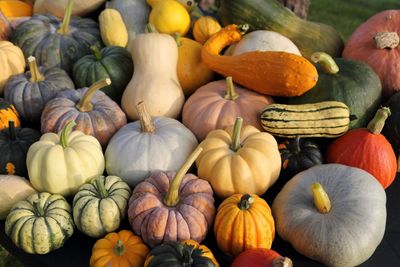Cucurbit Cross Pollination
The cucurbit family includes:
Watermelons Muskmelons Pumpkins Cucumbers Winter/summer squash Gourds
Since they reside in the same family, many folks believe that there will be cross pollination between the members. Although they all have similar flowering habits, bloom around the same time and, of course, are family members, it is not true that all cucurbits will cross pollinate. The female flower of each can only be fertilized by pollen from the male flowers of the same species. However, cross pollination can occur between varieties within a species. This is often seen in squash and pumpkins. Many people who have a compost area will be surprised (at first) to see squash plants that, if allowed to come to fruition, will be a combination of different squash. For this reason, summer squash, pumpkins, gourds, and various winter squashes that all fall into the same plant species of Cucurbita pepo may cross pollinate with one another. So, yes, you may end up with some oddball squash and gourds. How about melons and squash? Will melons cross with squash? No, because although they are within the same family, melons are a different species than squash.
Growing Cucurbits Close Together
What isn’t true is that this has nothing to do with planting cucurbits too close together. In fact, during the growing season and up to harvest, no noted change will be observed if cross pollination has taken place. It is in the second year, likely to happen if you want to save seeds for example, that any cross pollination will be evident. Only then would it be likely to get some interesting combos of squash. You can think of this as a good thing or a bad thing. Many amazing veggies are lucky accidents, and unintended cucurbit cross pollination might actually be fortuitous. The resulting fruit might be delicious, or at the very least an interesting experiment. What is sure, however, is that you can continue to plant cucurbits next to each other as long as they are commercially grown, disease resistant seeds, and are of a different species within the family of Cucurbitaceae. If you wish to save seeds, don’t try to save hybrid seeds, which will revert back to the traits of the parent plants and usually of a lesser quality. If you want to grow two kinds of summer squash, for instance, and plan to save the seed, plant heirloom squash at least 100 feet (30.5 m.) apart to reduce the possibility of cross pollination. Ideally, pollinate the flowers yourself to further reduce the risk.
